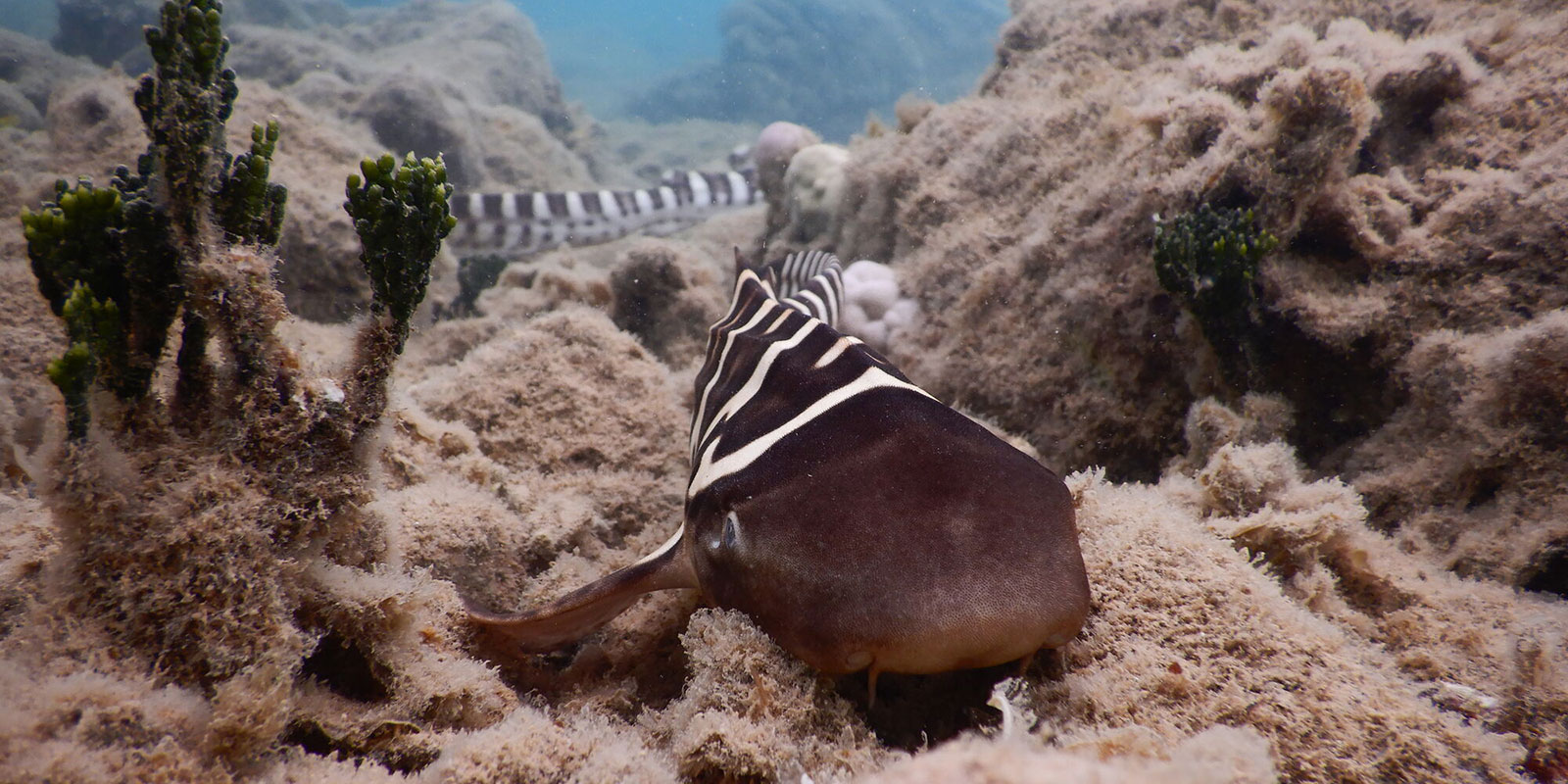The risk of sharks in New Caledonia

In New Caledonia, as in many tropical destinations, humans and sharks have coexisted for a long time. Although several recent attacks have raised legitimate concerns among swimmers, the shark risk remains statistically low and could be further reduced by adopting all the right prevention measures. In addition to the multiple regulatory initiatives of local authorities to secure tourist areas, we should all therefore show more vigilance and responsibility to fully enjoy the world's largest lagoon and its incredible biodiversity.
Shark attacks in New Caledonia
In a recent study by HAL-IRD, from 1958 to 2020, 67 cases of shark attacks, including 13 fatal ones, have been recorded in New Caledonia, affecting mainly spearfishermen (58.5%), swimmers (18.5%) and practitioners of water sports (14%). Local authorities are closely monitoring this issue and systematically conducting various regulatory and preventative measures, while exploring more structural security measures such as the possible installation of shark nets in the most frequented areas.
However, in terms of incidence, these dramatic events remain statistically isolated compared to other natural risks. Moreover, the research team of the National Museum of Natural History of Florida, which is compiling a reference list of all unprovoked shark attacks from 1580 to the present day, puts New Caledonia's situation into perspective in the world. New Caledonia ranks 13th in the number of shark attacks, far behind destinations such as Australia (691 attacks), South Africa (260 attacks) or Hawaii (179 attacks), with significantly higher volumes of attacks.
As global pressure on the oceans seems to be pushing sharks to live closer to the protected New Caledonian lagoon waters, it is essential to respect preventative guidelines by avoiding any "risky human behavior" (attitudes that could frighten sharks, put them in a defensive position or simply confuse them).
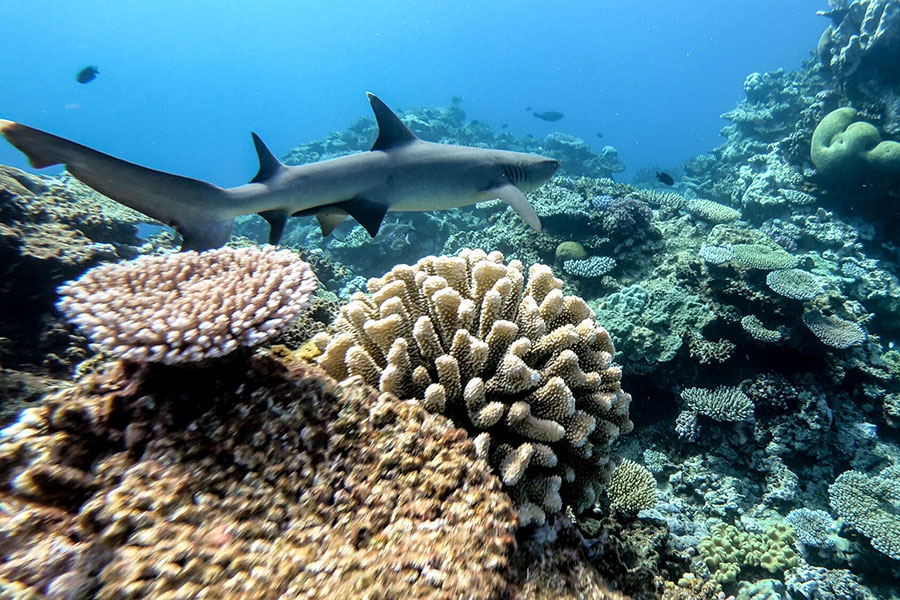
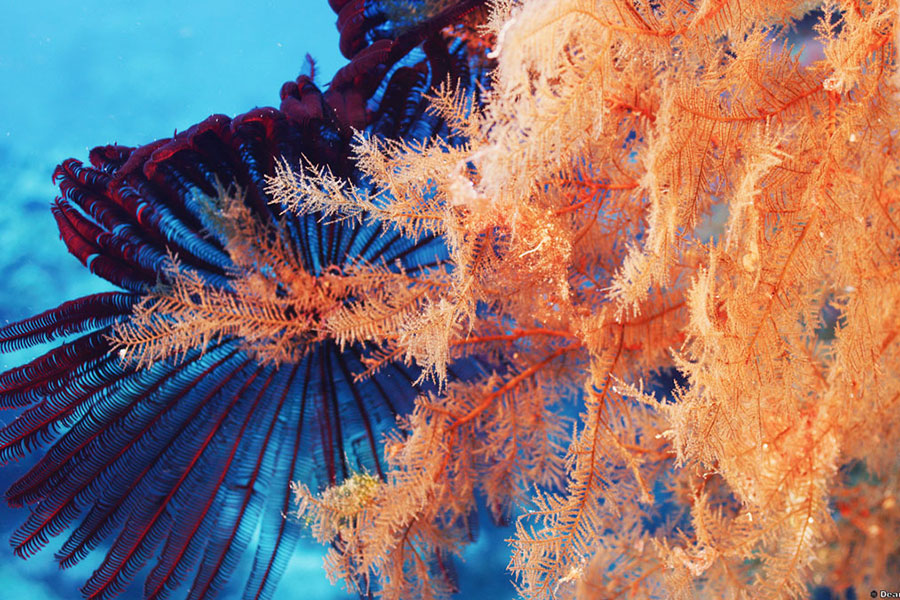
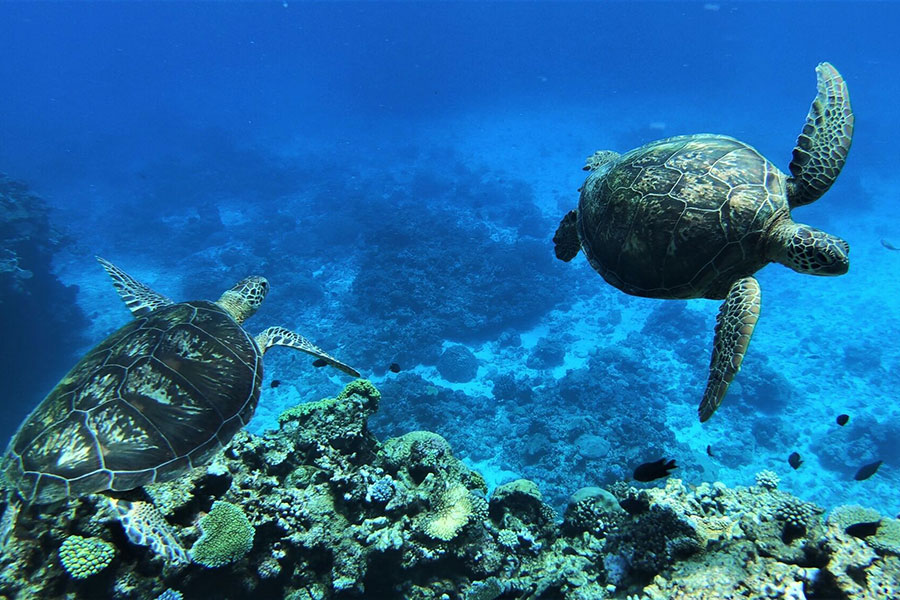
Where and when can we swim safely?
The data related to the context of shark attacks teaches us that, in the majority of cases, accidents occur when humans adopt a risky behavior towards sharks. Safe coexistence with sharks requires respect a few basic rules. In particular, it is important to avoid swimming in areas that are not recommended for swimming due to the shark risk and not to venture into the water at certain times of the day.
Where to swim in New Caledonia
In New Caledonia, the authorities closely monitor shark alerts, carry out surveillance rounds and indicate to users which beaches to avoid. In general, it is not recommended to swim:
- • In ports, near boat moorings and marinas.
- • In murky waters, near pipes or river mouths.
- • In the Nouville peninsula area in Nouméa.
For even more safety, we recommend that you only swim at supervised beaches. These adopt a flag system:
- • Green flag: supervised swimming and no particular danger.
- • Orange flag: supervised swimming but dangerous.
- • Red flag: swimming prohibited.
In Nouméa, the beaches of Baie des Citrons and Anse Vata have a swimming surveillance system from 9:30 am to 5:30 pm every day, from December to the end of February, during the school holidays in April, September and November, and, between them, during all long weekends.
The regulated nautical zones of Nouméa are regularly monitored by drone (Baie des Citrons, Anse Vata and Magenta).
End of swimming ban on Nouméa beaches and islets from 6th December
The ban on swimming on Nouméa's beaches and islets ends on 6th December, subject to certain conditions. Click HERE for more information.
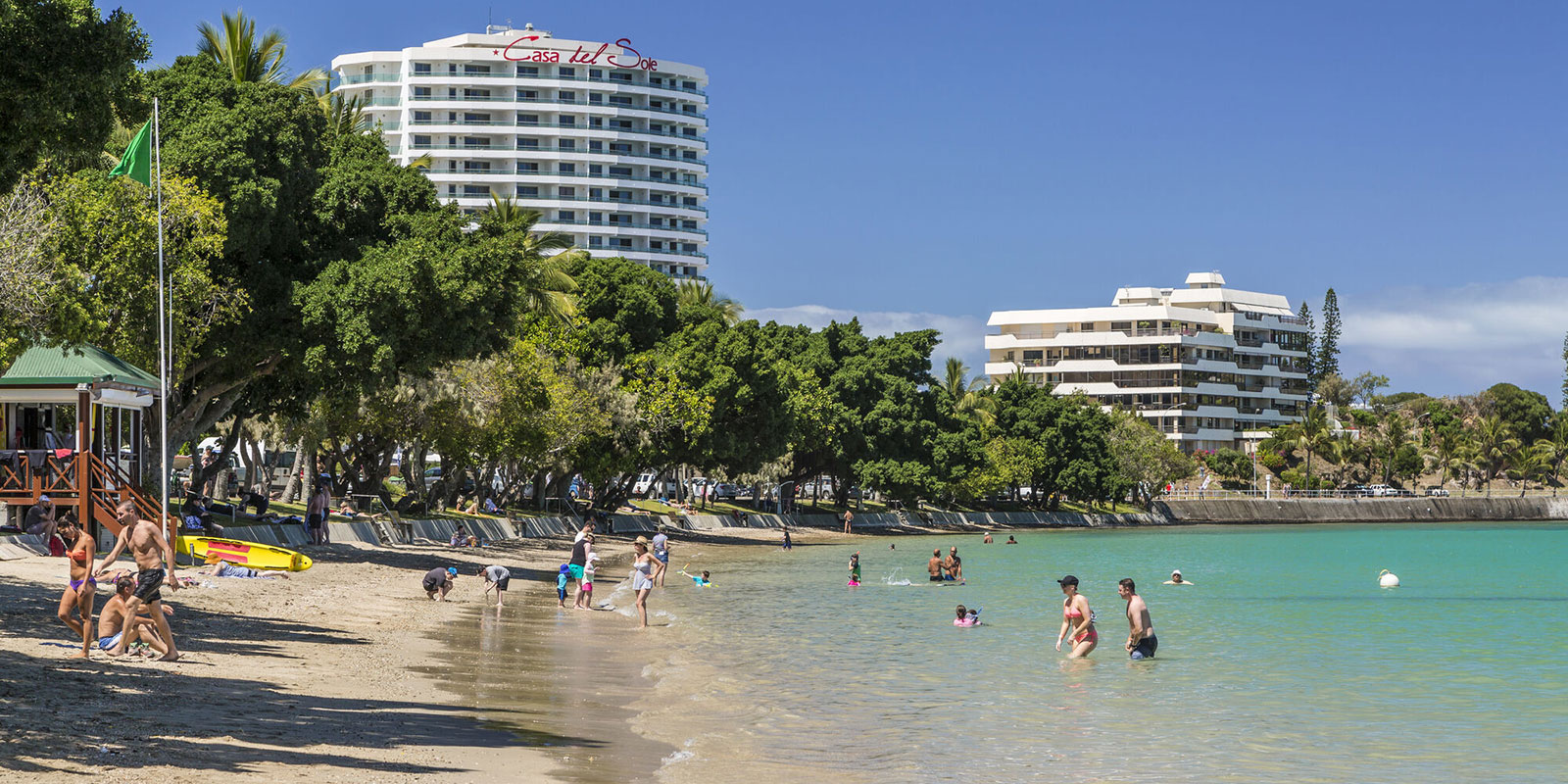
When should I avoid swimming?
In addition to the areas in which it's risky to swim, there are also certain times of day when the danger from sharks is elevated in New Caledonia. It is inadvisable to swim after periods of heavy rain (or other types of weather phenomena that agitate the water) and at nightfall or dawn.
Further tips and advice to ensure safe swimming
- • Avoid throwing any food into the water (do not feed bread to the fish);
- • Avoid swimming with your dog;
- • Fishermen and anglers: do not dump fish into the sea at moorings or anchorages, close to islands or in swimming areas;
- • Do not keep fish on your belt (fishermen and anglers);
- • Do not participate in water-based activities (such as kitesurfing, scuba diving, and windsurfing) alone;
How to react to a threatening shark
If you happen to come face to face with a shark, the first thing to do is stay calm and keep your eyes focussed firmly on it. Do not turn your back to it. If it tries to approach you, hold out a hard object (such as a snorkel, a mask or a flipper) and ensure it touches the shark. Once the shark detects the object is not edible, the chances are it will then leave.
Further tips and advice (Geo.fr)
Species protected in New Caledonia since 2013
Protecting biodiversity is ingrained in New Caledonia's regional DNA. Sharks play an important role in both Kanak traditions and the ecosystem. They have always been part of the Caledonian environment. People and sharks have to be able to live together in harmony here. As super predators, sharks have a low reproductive rate, making them particularly vulnerable and threatened throughout the world. Humans are also putting them in an increasingly fragile position due to the pressure exerted by fishing. It's for these reasons that sharks have been classified as protected species in New Caledonia since 2013. Fishing for sharks, transporting them, buying and selling them, cutting them into parts, keeping them, or consuming them in whole or in part are all prohibited.
The authorities have introduced various measures to keep local inhabitants and holidaymakers safe while at the same time protecting and preserving the species:
- Patrolling and monitoring of Noumea's bays at peak times.
- Banning of shark-feeding.
- The use of "hydrophone" tags to track the movements of sharks.
- Measures to drive sharks back out to sea.
- Temporary closure of swimming areas in case of a report.
- Periodic removals to regulate overpopulated species or those presenting an immediate danger.
What types of sharks are found in New Caledonia??
Where New Caledonia is concerned, "shark" is in fact a broad and general term covering a wide and diverse range of specimens. Biologists have identified 49 different species of shark, many of which pose no danger to humans unless disturbed or interfered with. This is the case with most types of shark normally seen on snorkelling or scuba diving trips, particularly:
• blacktip reef sharks
• whitetip reef sharks
• lemon sharks
• whitespotted bullhead shark
• grey reef sharks
The movement of sharks in the lagoon is the subject of various studies conducted by local authorities and environmental organisations, and from these studies we are able to find out the main areas sharks inhabit and thus indicate their locations to sea users through the use of signs.
The largest specimens, such as mako sharks, tiger sharks, hammerhead sharks and great white sharks, are found further out to sea on the other side of the barrier reef and only rarely make incursions into the lagoon. Humans are not their natural prey, though a few attacks by tiger sharks have been recorded. Bull sharks require more vigilance, as some have made areas near the coast their regular habitat, and they have a tendency to be more aggressive towards humans.
By simply following these few recommendations, you'll be able to swim and bathe with complete peace of mind in New Caledonia. It would be a shame to miss out on the opportunity to enjoy the delights of our UNESCO World Heritage listed lagoon and its exceptional biodiversity!
